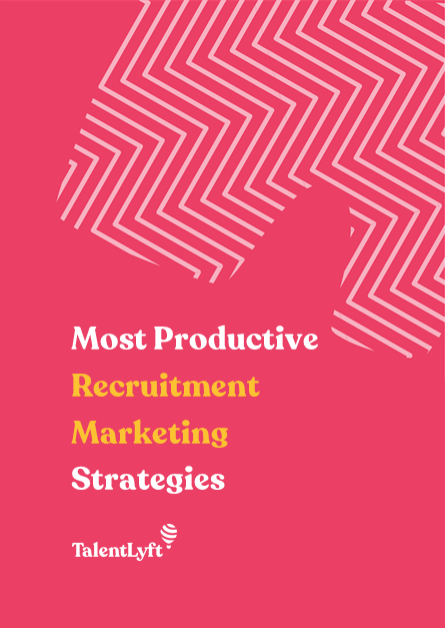
Need to create an effective recruitment marketing action plan? In this detailed, step-by-step guide you’ll learn how to create it - from scratch. Great recruitment marketing tips and tricks included. Are ready to put them in action?
Need to create an effective recruitment marketing action plan? In this detailed, step-by-step guide you’ll learn how to create it - from scratch. Great recruitment marketing tips and tricks included. Are ready to put them in action?
If you’re an HR or recruiting professional in today’s candidate-driven job market then you already know how hard it can be to fill open positions with great candidates.

Candidates are now in demand. These days, they are in control and they get to pick and choose where they want to work.
And with so many other companies competing for these same candidates, it can seem impossible to get top talent’s attention.
But with a well-rounded recruitment marketing strategy, it can actually be quite easy to build your talent pool and keep it filled with a steady stream of great candidates.
➡️ Download free eBook: Most Productive Recruitment Marketing Strategies!
In this blog post, I'll show you how to build an effective recruitment marketing plan.
You’ll be able to put into action immediately and start attracting great candidates right away!
If you’re new to recruitment marketing, check out this short explainer video:
Recruitment marketing is HR’s latest tool for attracting candidates.
It means using marketing methods to get candidates interested in your company and eager to apply for your open positions.
Recruitment marketing is focused on the first three stages of the candidates’ journey:
In this first stage, your aim is to build awareness of your company and your employer brand.
In this stage, your goal is to get potential candidates to start considering you as their next employer.
In this stage, your goal is to convince candidates to take action and apply for your open job positions.

Recruitment marketing can help you differentiate your company.
Using proven marketing tactics, you can attract candidates attention and get them to apply to your open job positions.
In the following text, I will explain exactly how to create an effective recruitment marketing plan.
Follow my step-by-step guide and learn how to master recruitment marketing!
Here is how you can create an effective recruitment marketing plan in 11 easy to follow steps:
Think about what you want to achieve with your recruitment marketing strategy.
Of course, your overall goal is to attract great candidates to apply to your open job positions.
However, you should also define precise specific goals that can be measured.
Some of the common recruitment marketing goals include:
Identify your ideal candidate by defining your candidate persona.
A candidate persona is the semi-fictional representation of your ideal job candidate.
Who is your ideal job candidate?
Think beyond your job requirements such as education, experience and skills. Dig deeper to really get a sense of this person.
Try to pinpoint their interests outside the work, habits, motivation and goals.
Some of the characteristics you may want to think about when building your candidate personas are:
Check out our cheat sheet for defining a candidate persona!
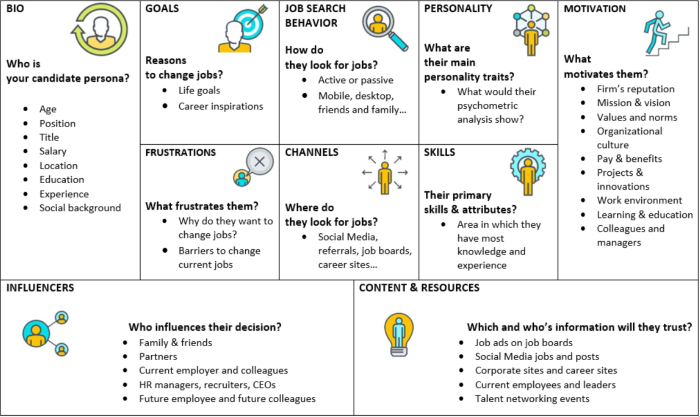
An employee value proposition is a message you will target your candidate persona with.
Why should your potential candidates come to work for your company? What can you offer them that other companies can’t?
The employee value proposition is so much more than just a great salary.
It also includes opportunities for career advancement, challenging work, working on interesting projects and with cutting edge technology, great company culture, attractive workspace, etc.
Employee Value Proposition is a comprehensive offering made up of 5 main components:
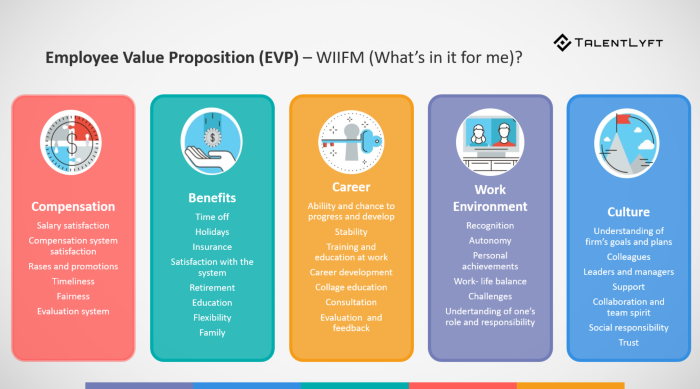
One of the best ways to attract your candidate persona’s attention is by presenting them interesting and useful recruitment content.
Great recruitment content will help you target the best candidates at the right time with the right message.
And no, your job ads are not enough - no matter how great they are!
There is a myriad of different types of recruitment content for each step of the candidate's journey.
Here are a few examples of different types of recruitment content you can create:
Your career site should be the hub of your recruitment marketing activity.
When potential candidates land on your career site, they should immediately find all the information they need to determine whether they want to work for your company.
A perfect career site explains who your company is, what you do and contain information about your company culture, values and work environment.
It also invites potential candidates to browse your open job positions and makes it easy for them to apply.
Finally, make sure that your career site is mobile friendly and optimized for SEO.
You can find detailed information on how to optimize your career site in our guide Best Tips for Optimizing Your Career Site & Generating More Job Applicants.
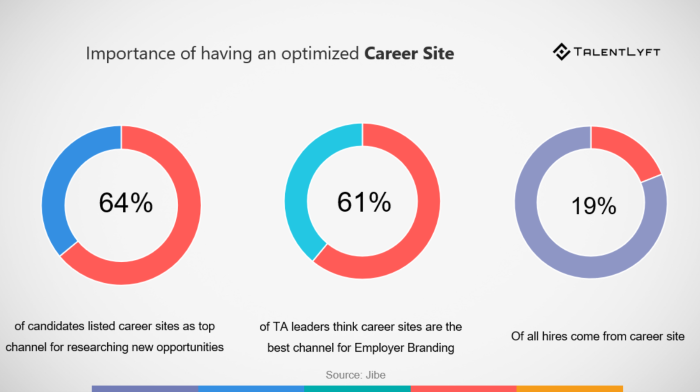
Social media recruiting is another key pillar of recruitment marketing.
Using social media is a great way to promote your recruitment content and reach potential job candidates.
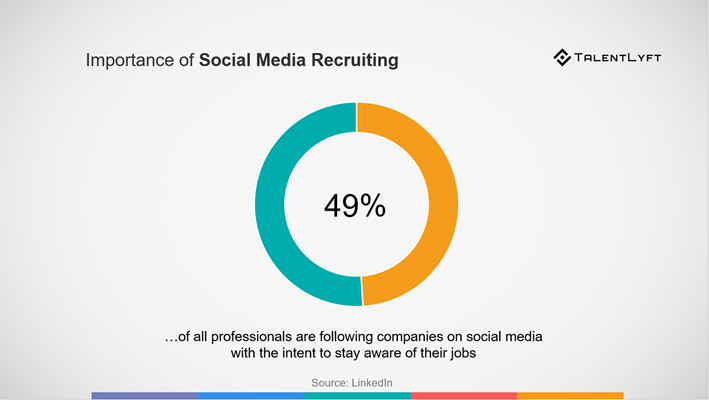
However, presenting your employer brand on many different social media networks is a lot of work.
Make sure to communicate your recruitment marketing messages on the social media networks that your candidate persona prefers and uses regularly.
Check out our guide with detailed instructions on building a social media recruitment strategy.
We also prepared specific tips for recruitment marketing on the most popular social media networks used for recruiting: LinkedIn, Instagram and Facebook.
Your existing employees are your best employer brand ambassadors.
Candidates trust employees 3 times more than the employer to provide information on working at the company, according to LinkedIn’s research.
So get your employees involved in your recruitment marketing plan!
Ask them to share your company’s recruitment marketing content on their personal social media profiles.
That way, you’ll be able to reach a much wider audience.
You should enlist them to help you create authentic recruitment content. Encourage them to:
A talent pool is a database of candidates interested in working for your company.
You can dip in your talent pool each time you have an open job position to find great candidates.
Sounds perfect, right? So how can you build your talent pool?

You should proactively reach out to candidates and invite them to join your talent pool.
You can do that in many different ways using lead generation method.
Here are some great ways to build your talent pool:
Filling your talent pool with great candidates doesn’t mean a thing if you don’t actively manage it.
Successful talent pool management starts with segmentation. Divide your talent pool into different groups.
This will enable you to nurture your candidates with highly personalized and customized marketing campaigns.
You need to stay in contact with your potential candidates, and nurture and engage with them until they are ready to apply for your open job positions.
You will do that by delivering useful, relevant content to their inbox via your newsletter regularly.
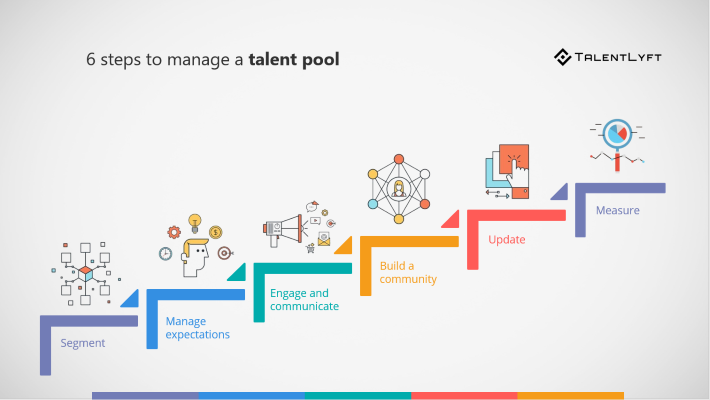
When I mention paid advertising to HR professionals, they usually immediately think of paid advertising on online job boards.
But paid advertising offers so many more great opportunities to reach candidates, especially passive ones - those that you won’t find on job boards.
Paid advertising can put relevant content in front of your ideal candidates, whether they're searching for jobs on Google, using social media or just casually browsing the internet.
Here are the 4 key types of paid advertising that are most useful in recruitment marketing:
Finally, you need to measure the success of your recruitment marketing efforts.
By gathering metrics on what works and what doesn’t you can adjust and improve your recruitment marketing plan.
In order to achieve even better results, you need to experiment.
By tracking your metrics, you can test different campaigns and identify job ads and calls to action that work best.
Thus, HR teams must constantly measure, store and evaluate data and track the most important recruitment marketing metrics.
Luckily, with modern recruitment marketing tools, this process can be completely automated.

Implementing a recruitment marketing strategy is much easier when you have all the help you need in one tool, created especially for recruiters!
This is why we created TalentLyft Recruitment Marketing Platform - to help you work faster and better!
Our recruitment marketing software will enable you to automate, streamline and improve your recruitment marketing process.
It is affordable, and easy to use and our customers love it!
Take action now:
➡️ Check all the possibilities offered by specialized recruitment marketing software!
Why do you need a recruitment marketing action plan?
A recruitment marketing action plan is essential for attracting top talent in today's competitive job market, helping to build and maintain a talent pool of great candidates.
What are the key steps in creating a recruitment marketing action plan?
Key steps include defining recruitment marketing goals, identifying your candidate persona, creating compelling recruitment content, optimizing your career site, and effectively using social media.
How can you effectively manage your talent pool?
Effectively managing your talent pool involves segmentation, personalized engagement, and nurturing potential candidates with useful, relevant content until they are ready to apply.
What role does paid advertising play in recruitment marketing?
Paid advertising extends the reach of your recruitment efforts to passive candidates through platforms like search engines, social media, and other websites.
How do you measure the success of your recruitment marketing strategy?
Measuring success involves tracking key metrics to understand what works and what doesn't, allowing for optimization and improvement of your recruitment marketing strategy.


